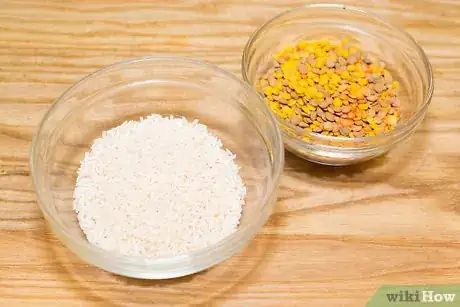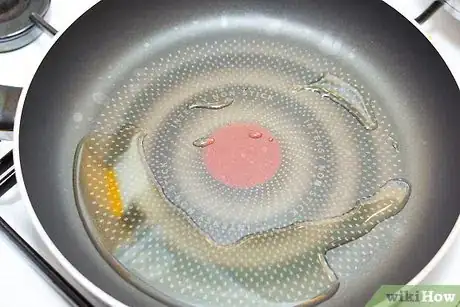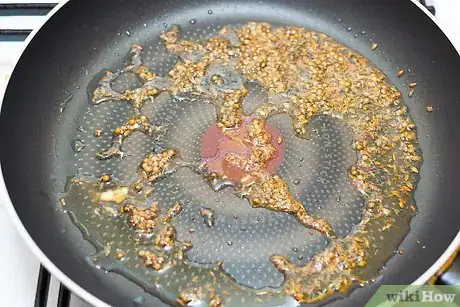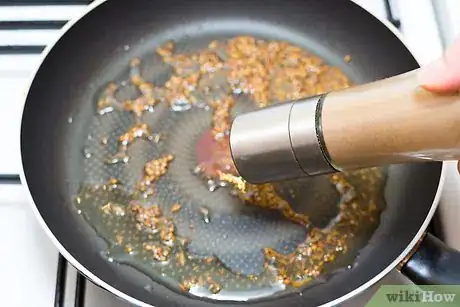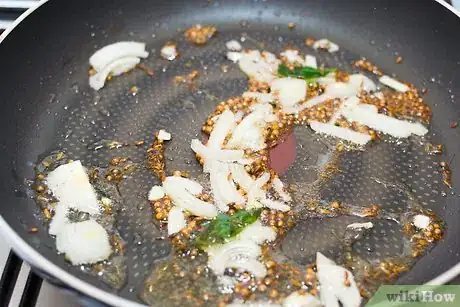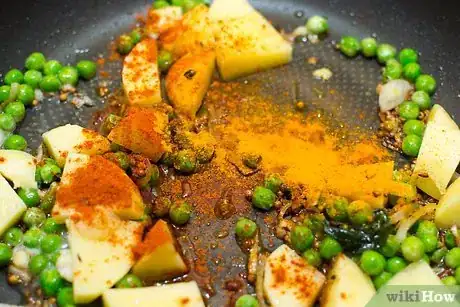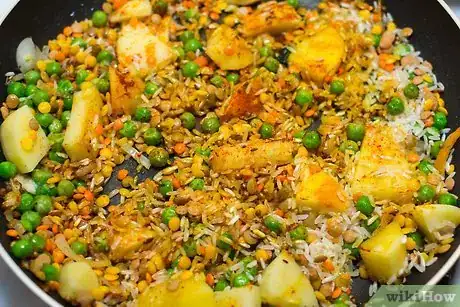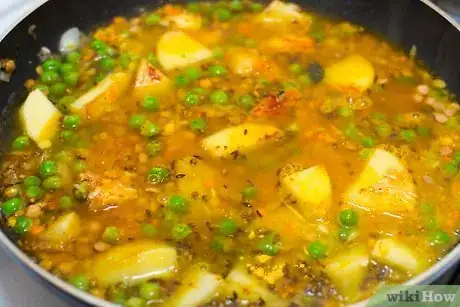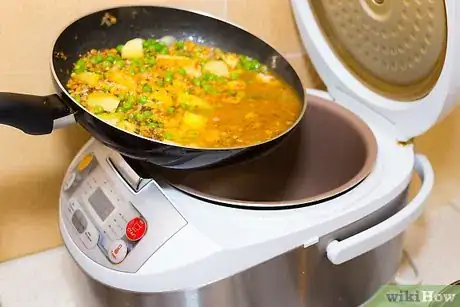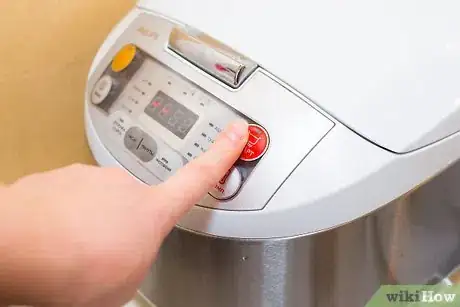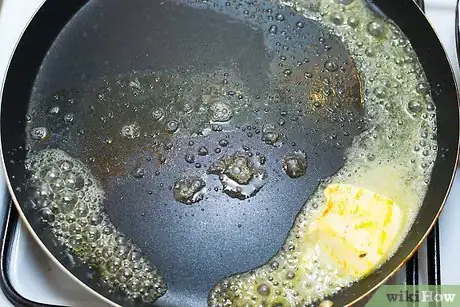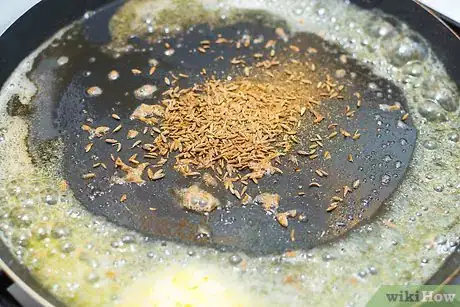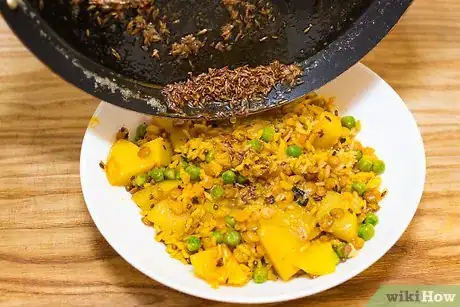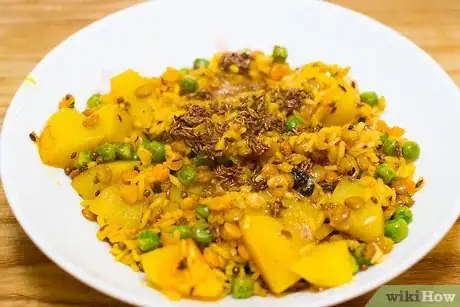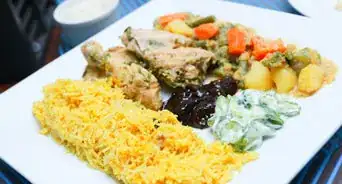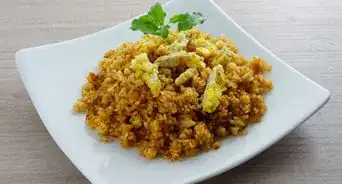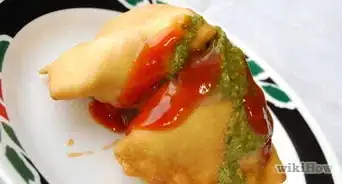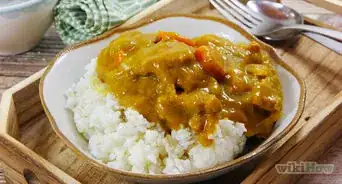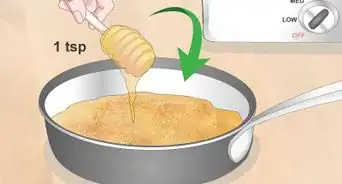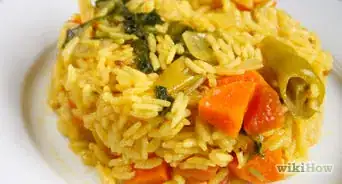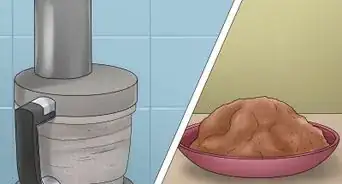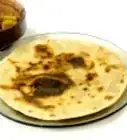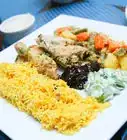This article was co-authored by wikiHow Staff. Our trained team of editors and researchers validate articles for accuracy and comprehensiveness. wikiHow's Content Management Team carefully monitors the work from our editorial staff to ensure that each article is backed by trusted research and meets our high quality standards.
This article has been viewed 470,637 times.
Learn more...
Khichdi is a South Asian rice dish made from rice and dal (the split version of pulses like lentils, peas, mung beans, etc.). It's commonly considered to be India's comfort food. There are two types of it, and the softer version is served to people who have an upset stomach, cold or flu. Another, the drier version is called Vuna Khichdi, and is usually made in rainy days. This easy-to-digest vegetarian dish is simple, delicious, and satisfying – it will soon become a staple in your diet! Consider the spices optional, as they may not be a fit for everyone.
Ingredients
- 1 cup rice
- 1/2 cup dal (lentils, mung beans, pigeon peas)
- 3-4 cups water
- 2 onions (medium size), finely chopped
- 2 green chilis
- 1 tsp ginger-garlic paste (or the equivalent of finely-chopped garlic and ginger)
- 2 potatoes (medium size), chopped into 1 inch (2.5 cm) cubes
- 1/2 cup green peas (fresh or frozen)
- 1/2-1 tsp turmeric powder
- 2 tsp chili powder
- 1 1/2 tsp coriander powder
- 1/2 tsp garam masala powder
- 2 tbsp oil
- 2 tsp mustard seed
- 1 1/2 tsp cumin seed
- 1/2 tsp whole black pepper
- pinch of hing (asafoetida)
- a few curry leaves
- Salt to taste
- For the topping: 2–3 tablespoon (29.6–44.4 ml) ghee, 1 tsp cumin seed, 2 red chilis, 6-8 cloves of finely-chopped garlic
Steps
Cooking the Rice and Dal
-
1Wash and soak the rice and dal. Rinse both in a strainer thoroughly, then place in a bowl and cover with water, letting it sit for 30 minutes.
- After 30 minutes, drain the rice and dal and set aside.
-
2Heat the oil. Do this in the pan of a pressure cooker over medium heat.
- If you prefer, you can use an equivalent amount of ghee for this step, instead of oil.
- Use a medium-size pressure cooker, about 5 liters (1 US gal) (5 quarts).
Advertisement -
3Add mustard seeds and 1 1/2 teaspoons of the cumin seeds. Once they start to sizzle, proceed to the next step.
- Cumin, also known as jeera, has a pungent flavor perfect for a variety of uses. It is also thought to have a range of medicinal properties and has been used to treat digestion, blood pressure and heart rate, among a range of other health issues.[1]
-
4Add the whole black pepper, curry leaves and hing. Sauté for 30-40 seconds.[2]
- Curry leaves, or kadi patta, are a common ingredient in Indian cuisine, and believed to have many health benefits, including warding off anemia, heart disease, and liver damage, regulating blood sugar levels, relieving diarrhea and congestion, and more.[3]
- Hing, also called asafoetida, is another crucial seasoning in Indian cuisine. It is thought to have a variety of medicinal properties, including anti-flatulent, anti-inflammatory, and antimicrobial, and has been used as a laxative, nerve stimulant, expectorant and sedative.[4]
-
5Add the chopped onion. Sauté the onions until they become transparent.
-
6Add the ginger-garlic paste. Sauté for 2-3 more minutes.
-
7Add vegetables. In this case, you'll add the chopped potatoes and peas. Sauté for 2-3 minutes.
- Feel free to experiment with the vegetables you add here. You can try cauliflower florets, chopped carrots, cabbage, green beans, etc.
-
8Add the turmeric, chili powder, coriander, and garam masala. Stir together and sauté for 2-3 seconds.
- Bright yellow, nutrient-rich turmeric (also called haldi) is thought to be antioxidant, antiviral, antibacterial, antifungal, anticarcinogenic, antimutagenic and an anti-inflammatory agent.
- Garam masala is a term for a blend of spices common in northern Indian cuisine. These include cloves, cinnamon, cumin and cardamom.[5]
-
9Add the soaked, drained rice and dal. Sauté for just a few more seconds.
-
10Add the water and bring to a boil. Stir the ingredients and salt to taste.
- The amount of water you add here depends on the desired texture. For mushy khichdi, use a quantity that is double the total amount of rice and dal, plus one extra cup (here, 2(1+0.5)=3+1=4). If you prefer a more structured version, use less water (here, 3 cups).[6]
-
11Close the pressure cooker and cook on high heat. Once you hear the first whistle, reduce the heat to medium and continue until the cooker whistles twice.[7]
-
12Turn off the flame and allow the cooker to cool down completely. After a few minutes, open the pressure cooker. The water should have completely absorbed into the khichdi by now.
Preparing the Topping
-
1Melt the ghee in a frying pan. Use medium heat.
- Ghee is clarified butter. If you can't find it at the store, you can make your own.
-
2Make the tadka. Tadka means "tempering," and involves extracting the essence from spices by heating them in oil or ghee.[8] Here you'll add the cumin seeds, and once they're sizzling, the red chilis and chopped garlic. Sauté them for just a few seconds.
-
3Pour the tadka over the khichdi. Mix well, and serve the khichdi hot!
- Garnish with cilantro (coriander leaves) if you like.
-
4Finished.
Community Q&A
-
QuestionAre you sure this is the proper way?
 Community AnswerIt's one way of making the dish. Give it a try and see how you like it. If you don't, search online for other recipes/methods.
Community AnswerIt's one way of making the dish. Give it a try and see how you like it. If you don't, search online for other recipes/methods. -
QuestionWhat size should the onions be chopped?
 Priya NCommunity AnswerYou can chop them whichever size you want, but ideally you should finely chop them.
Priya NCommunity AnswerYou can chop them whichever size you want, but ideally you should finely chop them. -
QuestionIs this dish healthy?
 Community AnswerYes, khichdi is very good for health. It contains amino acids and it is easy on your digestive system.
Community AnswerYes, khichdi is very good for health. It contains amino acids and it is easy on your digestive system.
Things You'll Need
- Ingredients
- Pressure cooker
- A small pan
References
- ↑ http://www.thehealthsite.com/diseases-conditions/health-benefits-of-jeera-cardamom-cumin-ealichi-p114/
- ↑ http://foodviva.com/rice-recipes/vegetable-khichdi-recipe/
- ↑ https://www.thehealthsite.com/diseases-conditions/10-health-benefits-of-kadi-patta-or-curry-leaves-p214-121884/
- ↑ https://www.thehealthsite.com/diseases-conditions/health-benefits-of-hing-51199/
- ↑ http://www.thehealthsite.com/diseases-conditions/health-benefits-of-jeera-cardamom-cumin-ealichi-p114/
- ↑ http://www.padhuskitchen.com/2013/02/vegetable-khichdi-recipe-khichdi-in.html
- ↑ http://foodviva.com/rice-recipes/vegetable-khichdi-recipe/
- ↑ http://www.npr.org/2011/12/07/143251451/the-crackling-spices-of-indian-tempering
About This Article
To make khichdi, soak rice and dal in water for 30 minutes. In a pan, toast mustard and cumin seeds in ghee, then add pepper, curry leaves, and hing. Stir in the chopped onion, ginger-garlic paste, and vegetables, followed by the spices. Pour in the rice and dal and enough water to cover it, then pour everything into a pressure cooker. Cook it until the water has been absorbed. While it’s cooking, make the tadka topping by sautéing cumin, chilis, and garlic in melted ghee. Pour the topping over the khichdi and enjoy. To learn more, such as which vegetables to try in you khichdi, keep reading the article!
